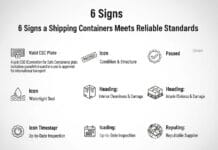Leadership has always been a personal thing. People leading other people — not machines, not dashboards, not long spreadsheets. What’s happening in 2025 doesn’t change that foundation, but it adds something new: AI tools that quietly sit in the background and give leaders more visibility, more clarity, and fewer surprises.
It’s not about replacing anyone. It’s about giving leaders a better view of what’s actually happening inside their teams and organizations.
Intuition Still Matters, but Now It Has Backup
A lot of leadership used to rely on instinct — the kind you build after years of mistakes, tough conversations, big wins, and internal drama. Leaders got good at reading the room, noticing who’s disengaged, or sensing when a project was going sideways.
AI doesn’t kill intuition. It fills in the blind spots.
Modern tools look at everyday signals:
who communicates with whom, how fast teams respond to each other, when meeting tone shifts, when collaboration slows. Things that humans don’t really track — because no one can monitor dozens of micro-signals across an entire organization at once.
Leaders still decide. But now they decide with better situational awareness.
A Pulse Check That Never Sleeps
Companies used to rely on surveys and quarterly reviews to understand how people were doing. By that time, you’re not diagnosing the issue — you’re dealing with symptoms that have been around for months.
AI can read organizational health in near real time.
One example SpdLoad came across: an engineering team’s communication tone dropped noticeably even though productivity looked fine. Leadership hadn’t noticed anything yet. AI flagged the trend early, the company stepped in, fixed the workload imbalance — and avoided losing top talent.
Most leaders never catch things at that stage. AI does.
Learning to Lead in a Way That Actually Fits You
Traditional leadership training tries to teach everyone the same set of rules. Helpful, but it doesn’t take into account individual habits or what role someone actually has.
AI can watch how a leader works day to day — how they write messages, how they delegate, how they decide, how conflicts get handled. Then it gives feedback that fits the person, not a generic career path.
This is especially useful for technical leaders moving from hands-on work to people management. SpdLoad saw how AI helped these leaders shift their balance between coding and managing, communicate better with non-technical teams, and avoid burnout from trying to do everything at once.
Decisions With Better Context, Not Just More Data
Strategic decisions often feel like educated guesses. Even the best leaders rarely have a full picture.
AI tools now run scenarios in a way humans simply can’t.
“Should we enter this market?”
“What happens if we reorganize these teams?”
“Is this product even worth building?”
The AI compares similar historical patterns, market trends, internal performance, team bandwidth — and doesn’t predict the future, but gives leaders a clear map of potential paths. The clarity doesn’t make the choice easy, but it does make it more grounded.
Sometimes the system even spots a decision point before leadership realizes it exists.
Communication That Doesn’t Get Lost on the Way Down
Leaders can’t personally talk to everyone in a large company. That’s how messages get distorted — by the time they reach the front line, half the meaning is gone.
AI tools help leaders shape clearer communication.
They can:
- highlight parts of a message that may be misunderstood,
- rewrite announcements for specific teams,
- show which employees didn’t read it,
- surface questions people still have.
Some tools even tell leaders who deserves recognition or who might be feeling overlooked — something leaders often miss unintentionally.
Making Inclusion Visible Instead of Guesswork
Bias doesn’t show up in big decisions — it hides in the everyday flow of work. Who speaks in meetings, who gets bigger assignments, who gets credit, who becomes a go-to person.
AI can spot patterns that were always invisible.
In one case SpdLoad saw, women engineers were consistently receiving more execution tasks, while men got more architecture work. No one intended it — it was just a quiet pattern that built up over months.
AI surfaced it early. Leadership fixed it. People stayed.
Without AI, that imbalance might have shaped careers for years.
A Better Way to Lead Remote and Hybrid Teams
Remote work made leadership harder. You can’t “read the room” on a Zoom grid.
AI tools now fill in those gaps.
They show:
- who’s becoming isolated,
- which teams collaborate less over time,
- where engagement dips,
- whether meeting schedules are burning some people out,
- how communication habits shift.
Leaders get insights they simply can’t gather manually in a distributed organization.
Succession Planning Without Guessing
Companies often guess who has leadership potential based on visibility or personality. That misses a lot of people who have real leadership traits but aren’t loud about them.
AI looks beyond personality.
It tracks:
- adaptability,
- learning pace,
- influence patterns,
- cross-team trust,
- ownership behavior.
This turns succession planning into something dynamic and grounded, not a once-a-year exercise full of guesswork.
Leadership Still Requires Ethics — Maybe More Than Ever
With AI influencing decisions, leaders need to set boundaries.
What decisions should AI help with?
Which ones are too sensitive?
How do we check algorithms for bias?
When is AI wrong — even when it looks right?
Organizations are creating new governance rules to answer these questions. The goal isn’t to use AI everywhere, but to use it responsibly, with humans still accountable.
What Leadership Becomes Now
Leaders who succeed in 2025 aren’t just “using AI.” They’re using it well — without losing their human instincts.
They:
- stay grounded in values,
- know when data matters and when empathy matters more,
- use insights without becoming dependent on them,
- understand the limits of algorithms,
- keep people at the center.
AI is already reshaping leadership. The difference between leaders who thrive and those who fall behind will come from how well they balance technology with humanity.





